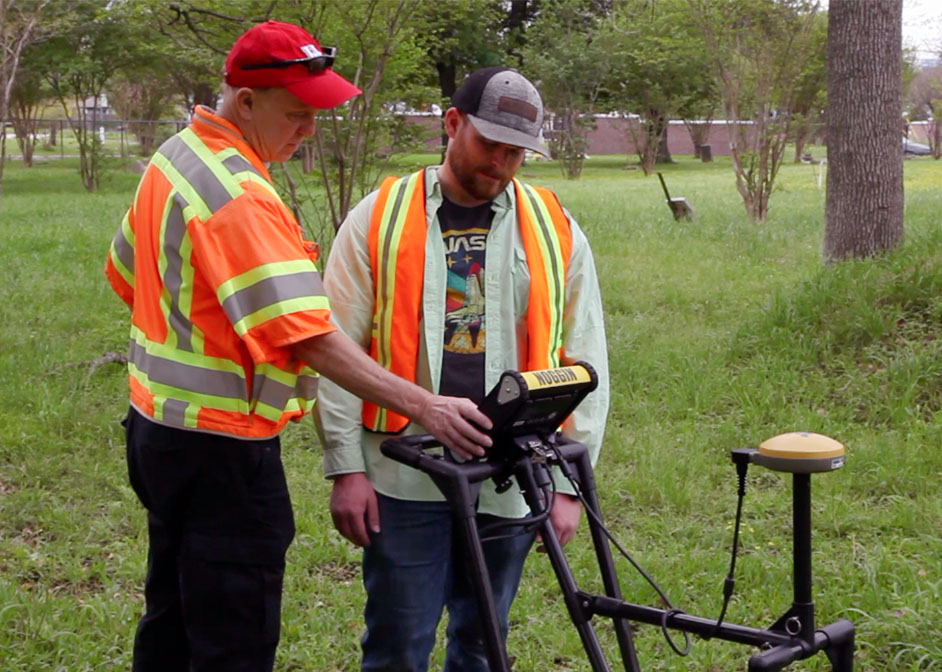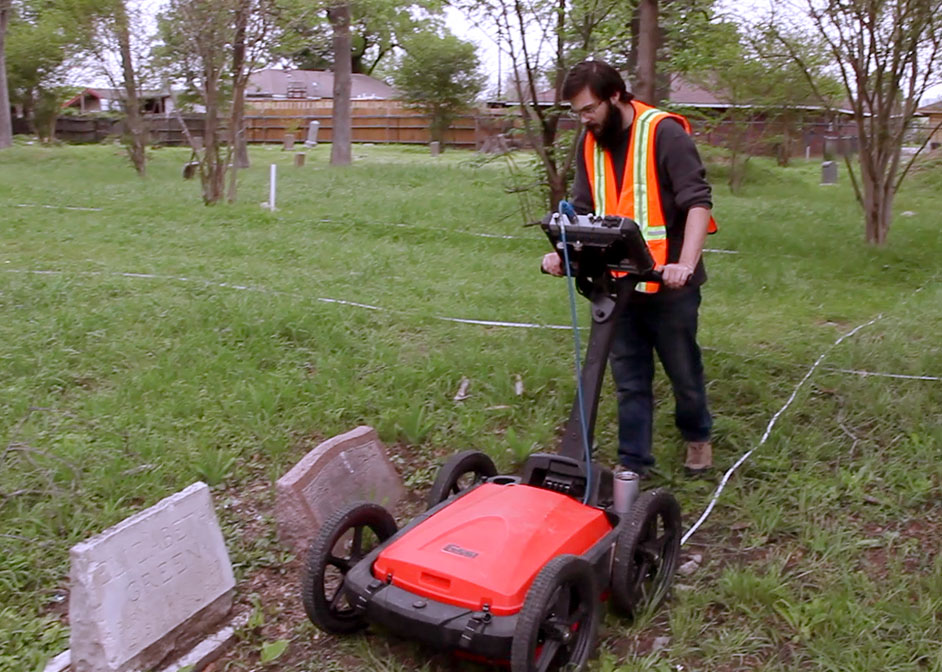Campaign Combines Use of Ground Scanning Tools with Community Service to Locate Forgotten Graves
Nestled along a popular corridor in Houston’s Fifth Ward is a cemetery that time had begun to forget. Underneath the weeds growing there, lies much of its history still waiting to be uncovered and commemorated.

The Evergreen Negro Cemetery has roots dating back to the 1800s, with connections to slaves and a plantation that once occupied the area.
Rising from the ruins of the site is an effort by community groups, such as Project RESPECT and the Shuffield Foundation, the city of Houston and the University of Houston, to provide long-overdue dignity to those buried there, including former slaves, World War I veterans, Buffalo Soldiers and early community pioneers.
Part of the restoration involves Rob Stewart, professor of geophysics, at the UH College of Natural Sciences and Mathematics, along with UH Earth and Atmospheric Sciences researcher Chaz Clapsaddle and geophysics Ph.D. student Presley Greer.
“The idea is to try to reunite legacy families, to identify burials and to commemorate them,” said Stewart.
In addition to finding graves, Stewart and his team are tasked with locating areas on the site that do not have burials. This will allow for the proper relocation of graves, plus new memorials and infrastructure.

In 2009, the site was designated as a Historic Texas Cemetery by the Texas Historical Commission.
Mission to Restore
The cemetery fell into disrepair over the years; however, recent work is leading to big improvements. A new fence, complete with gates, signage and brick façades, was erected and dedicated in late 2023.
Before the new fence could be built, developers wanted to ensure that they would not disturb any unmarked gravesites. Stewart and his team of graduate and undergraduate students were tapped to help.
Equipped for the Task
“We used our geophysical equipment to scan the areas around the site where the fence would be built,” said Stewart. “To the best of our science, we had to make sure that there was no evidence of burials or interments.”
Knowing where the site’s empty land exists was crucial not only for the fence, but also for plans to reinter remains of those who had been or could be moved. Forgotten gravesites were found under the median of Lockwood Drive by archaeologists and construction crews preparing to build a new bus rapid transit route. The road was expanded through the middle of the cemetery in the late 1950s.
“We’re using ground-penetrating radar, electromagnetic detection methods, metal detectors, even drones,” said Chaz Clapsaddle, a UH Earth and Atmospheric Sciences researcher.
By using airborne drone imagery, the team also discovered a long-lost road traversing the middle of the cemetery on both sides of Lockwood.
“We’re checking out this legacy roadway to avoid any unmarked burials,” said Stewart. “There are plans to build a shrine or columbarium along the path.”
Hands-On Learning
The project presents a unique learning opportunity for students, going beyond the traditional classroom.
“This is one aspect of geophysical work that we don’t really learn about in the classroom,” said Clapsaddle. “It’s nice to actually do the research out in the field while helping the community at the same time.”
Clapsaddle is a 2023 graduate of UH who is currently conducting research under the direction of Stewart.
Science Meets Community Outreach
Stewart’s group joins a decades-long restoration effort led by Project RESPECT. That group’s work will include reinterring bodies that were discovered under the Lockwood median.
“Part of our job is to find space available on these cemetery grounds to move the graves to a safer resting spot,” said Clapsaddle.
The project is also gaining support from international groups like the Society of Exploration Geophysicists and its Geoscientists without Borders Project which is helping with restoration of Evergreen and similar cemeteries in the Houston area.
- Chris Guillory, College of Natural Sciences and Mathematics